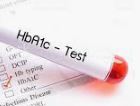How This Helps
As soon as you understand your HbA1c level, you must
understand what the results mean and how to prevent them from going too high.
Even a slightly elevated HbA1c degree makes you more vulnerable to severe
complications. What’s the perfect HbA1c level when you have diabetes? It is
6.5% or below. It is different if you are at risk of developing Type 2.
See: Insulin Plant Benefits & Precautions For Diabetes
Science and Research
The HbA1c test offers a simple and effective tool for
diabetes monitoring. The higher the HbA1c value, the weaker the diabetes
management is. That also implies the higher possibility of heart, kidney, nerve,
and eye damage as diabetic complications.
One can lead a more relaxed life if tested periodically for
HbA1c, as recommended by your healthcare team.
People are experiencing the onset of diabetes around the
world, creating a global health crisis. The threat of diabetes-related
complications can be prevented with proper management of blood sugar levels,
blood pressure, and blood lipids. HbA1c test is a simple and efficient tool in
diabetes monitoring. When a part of the blood sugar attaches with hemoglobin in
the blood, it forms a complex called glycosylated hemoglobin. This is also
called as HbA1c or A1c value. Typically expressed as a percentage, the amount
of HbA1c is directly related to the average concentration of sugar in the
blood. The HbA1c value is quite stable for two to three months period. It
offers an indication of diabetic control within the past two to three months.
What does HbA1c mean?
HbA1c is what’s called glycated hemoglobin, and forms when
the glucose in your body attaches to your red blood cells. Your body can not
utilize the sugar correctly, so more of it sticks to your blood cells and
builds up in your blood. Red blood cells have a life span of about 2-3 months,
and that’s the reason why it’s a quarterly test.
A high sugar level in the blood can damage your blood
vessels. This damage may result in severe problems in parts of the body, like
your feet and eyes.
You may check these normal blood glucose levels yourself,
but you will need to purchase a kit, whereas the health care professional will
do it at no cost. It is distinct from a finger-prick evaluation, which is a
snapshot of your glucose levels at a specific time on a particular day.
A hemoglobin A1c (HbA1c) test measures the blood glucose
(sugar ) amount in hemoglobin. Hemoglobin in your red blood cells carries
oxygen from the lungs to the rest of your body. An HbA1c test shows what the
average quantity of sugar in hemoglobin has been over the past three month
period. A three-month average is used because that’s typically the life cycle
of a red blood cell.
If you have high HbA1c levels, it may indicate the onset of
diabetes that may cause serious health issues, including heart disease, kidney
disorder, and nerve damage.
You discover your HbA1c level by getting a blood test by a
physician or nurse. Your health care team will arrange this for you, but chase
this up with your health care team if you have not had one for a month or two.
Most individuals are going to have the test every three to
six months. However, you might need it more frequently if you are looking for a
baby, your therapy has recently changed, or you are having problems managing
your glucose levels.
An HbA1c test can also be used to diagnose diabetes, and
also to keep an eye on your levels if you are in danger of developing diabetes
(you’ve got prediabetes).
HbA1c test results
You should get the results back quickly. The consequence of
the HbA1c test lets your health care team know if they have to change your
medication or treatment that will assist you in managing your levels improved.
Besides, it tells you a number, and you must understand what this means. Some
may find it helpful to write down the results in a journal and to track any
trends.
Your HbA1c can change for a lot of reasons, including:
– If you are unwell
– if you are taking other medications, such as steroids
– changes in lifestyle
– 2if you are feeling very stressed or you are depressed.
You’ll speak with your health care team about a target level
which you will need to aim for. We know that this isn’t as simple as it sounds,
but it is essential you do all you can to maintain your target range. The more
your HbA1c level is even slightly high, the more you are in danger of
developing life-threatening complications.
HbA1c levels and targets
In case you have diabetes, a perfect HbA1c level is 6.5% or below.
But everybody’s different. So that your healthcare team may
provide you an individual goal level that considers your current level and if
your next evaluation is. That means you can bring it down in stages and is not
a sudden significant drop.
And we are not saying it’s easy to get to and remain at this
level. We know it’s hard, and we are here to provide you with information and
advice to help.
There are various target HbA1c levels for individuals at
risk of developing Type 2 diabetes. If you have been told you are at risk, your
target level should be under 6 percent.
An HbA1c level of 6.5% or less can be used to define
diabetes remission.
Type 2 diabetes remains a critical condition. It may be
lifelong and get worse over time for many, but it does not have to be like this
for everybody.
See: Benefits of Cordyceps Sinensis for Diabetes Mellitus and Depression
Why do you need the HbA1c test?
You may need to get an HbA1c test if you are experiencing
any symptoms of diabetes. These include:
· Increased thirst
· Increased urination
· Blurred vision
· Fatigue
Your health care provider may also recommend an HbA1c test if
you’re at higher risk for getting diabetes. Risk factors include:
· Being overweight or obese
· High blood pressure
· History of heart disease
· Physical inactivity
What do the test results mean?
HbA1c results are given in percentages. The typical results are below.HbA1c results are given in percentages. The typical results are below.
· Normal: HbA1c under 5.7percent
· Prediabetes: HbA1c between 5.7percent and 6.4
· Diabetes: HbA1c of 6.5% or higher
Your results may mean something different. For any questions
regarding the test or the results, speak with your health care team.
If you are diabetic, The American Diabetes Association
recommends keeping your HbA1c levels below 7 percent. Your healthcare provider
may have additional recommendations for you, based on your general health, age,
weight, and other elements.
See: Natural Home Remedies To Prevent & Reverse Type 2 Diabetes
Summary
HbA1c test provides a good overview of the efficacy of
diabetic treatment and controls put in place. This test indicates the current
glucose level in the blood in order to help control normal blood glucose levels
during the day. This can help in preventing a lower level of glucose in the
blood than average or hypoglycemia. It is also used to see how diet, exercise,
and medications are affecting blood glucose on a day to day basis. The American
Diabetic Association (ADA) recommends keeping track of HbA1c value every three
months or four times a year. This ensures that one takes the ideal medicines to
control diabetes and prevent complications.







